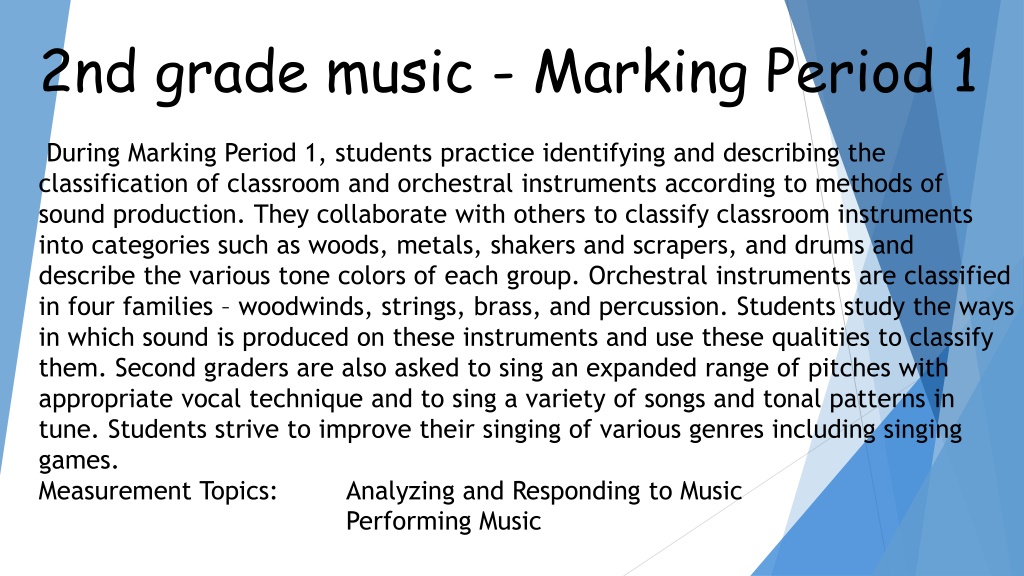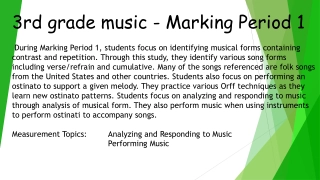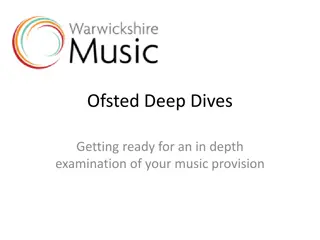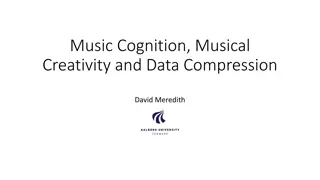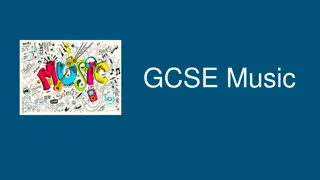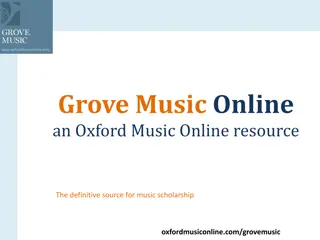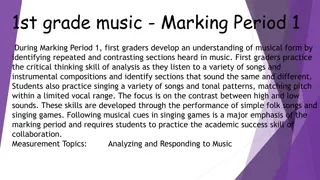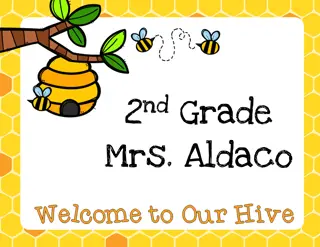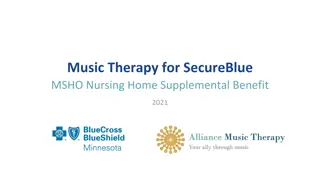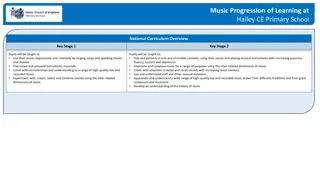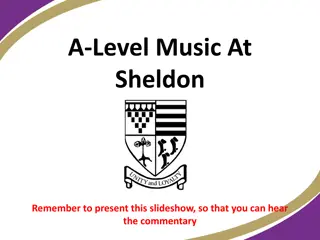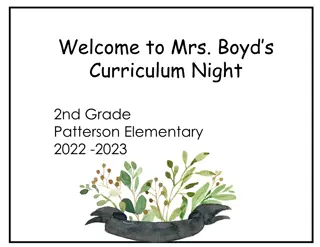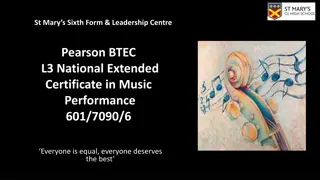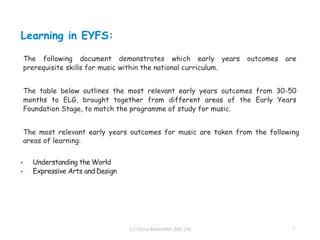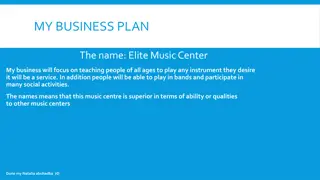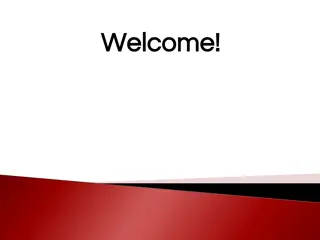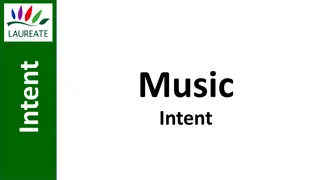Exploring Music Concepts in 2nd Grade Curriculum
Second-grade music curriculum focuses on developing students' understanding of instrument classification, sound production methods, pitch ranges, singing techniques, rhythm patterns, musical notations, and music appreciation. Through engaging activities, students explore different musical elements, genres, historical periods, and cultural influences, enhancing their musical skills and knowledge progressively through four marking periods.
Download Presentation

Please find below an Image/Link to download the presentation.
The content on the website is provided AS IS for your information and personal use only. It may not be sold, licensed, or shared on other websites without obtaining consent from the author. Download presentation by click this link. If you encounter any issues during the download, it is possible that the publisher has removed the file from their server.
E N D
Presentation Transcript
2nd grade music - Marking Period 1 During Marking Period 1, students practice identifying and describing the classification of classroom and orchestral instruments according to methods of sound production. They collaborate with others to classify classroom instruments into categories such as woods, metals, shakers and scrapers, and drums and describe the various tone colors of each group. Orchestral instruments are classified in four families woodwinds, strings, brass, and percussion. Students study the ways in which sound is produced on these instruments and use these qualities to classify them. Second graders are also asked to sing an expanded range of pitches with appropriate vocal technique and to sing a variety of songs and tonal patterns in tune. Students strive to improve their singing of various genres including singing games. Measurement Topics: Analyzing and Responding to Music Performing Music
2nd grade music - Marking Period 2 During Marking Period 2, second graders perform songs and dances from a variety of historical periods and world cultures. This includes performing sequences of movement in singing games and dances. Using classroom instruments, students perform a bordun to accompany a given melody. Second graders are introduced to half notes and rests and use metacognition to practice reading simple rhythm patterns and other musical symbols. They also read and perform an expanded range of pitches including do, re, and la. Measurement Topics: Analyzing and Responding to Music Performing Music
2nd grade music - Marking Period 3 During Marking Period 3, students read simple rhythm and pitch patterns and notate them using a five-line staff. They analyze patterns of notes in spaces and around lines. As students learn more about jazz, they take intellectual risks to experiment with improvisation. Students use instruments and the voice to improvise simple rhythmic and melodic phrases. Measurement Topics: Creating Music Reading and Notating Music
2nd grade music - Marking Period 4 During Marking Period 4, second graders listen to and describe music that illustrates fast/slow, loud/soft, long/short, and high/low. They learn musical terms such as lento, allegro, piano, and forte to describe these elements. Many of these contrasts are presented in excerpts of music representing diverse styles, periods, and cultures. In creating music, second graders compose simple rhythm patterns and notate them using standard notation. Through effort, motivation, and persistence, students are expected to sing an expanded range of pitches, tonal patterns, and songs in tune with appropriate vocal technique. Measurement Topics: Analyzing and Responding to Music Creating Music
